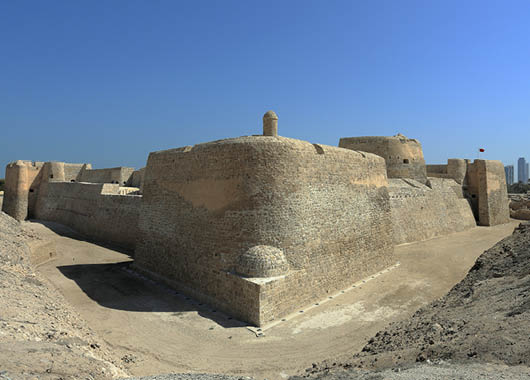
Bahrain, officially the Kingdom of Bahrain, is an island country in West Asia. It is situated on the Persian Gulf, and comprises a small archipelago made up of 50 natural islands and an additional 33 artificial islands, centered on Bahrain Island which makes up around 83 per cent of the country's landmass.
Bahrain is renowned for its verdant groves of date palms; since ancient times it has been an entrepôt for trade and a source of natural resources for the surrounding area. Bahrain Island is widely believed to be the site of the ancient kingdom of Dilmun, a commercial centre that traded with ancient Sumer.
Bahrain is a constitutional monarchy. The head of state is the king, and the head of government is the prime minister. The area has long been an important trading centre and is mentioned in Persian, Greek, and Roman references.
The island of Bahrain is renowned by the welcoming hearts of its population, a rich cultural and historical heritage, its economic diversity and endless opportunities. Lifestyle options are many and varied, and the country is known as one of the most forward-thinking and liberal in the Middle East.
The country has a well-developed education system that includes both public and private schools, as well as vocational and higher education institutions. Bahrain is also home to several international schools, providing options for expatriate and foreign students.

The Qal'at al-Bahrain (Arabic: قلعة البحرين; Portuguese: Forte de Barém), also known as the Bahrain Fort or Portuguese Fort, is an archaeological site located in Bahrain. Archaeological excavations carried out since 1954 have unearthed antiquities from an artificial mound of 12 m (39 ft) height containing seven stratified layers, created by various occupants from 2300 BC up to the 18th century, including Kassites, Greeks, Portuguese and Persians. It was once the capital of the Dilmun civilization and was inscribed as a UNESCO World Heritage Site in 2005. The fort and the tell Qal'at al-Bahrain is built on, are located on the Bahrain island, on the northern seashore. On a clear day it is also seen from Saar. It stands like a "sentinel" near Manama, the capital of Bahrain; it is 6 km (4 mi) away from Manama on the fertile north coast. The tell is the largest in the Persian Gulf region and was built close to the port and by reclamation of seashore land. The archaeological findings, which are unearthed in the fort,reveal much about the history of the country. The area is thought to have been occupied for about 5000 years and contains a valuable insight into the Copper and Bronze Ages of Bahrain.